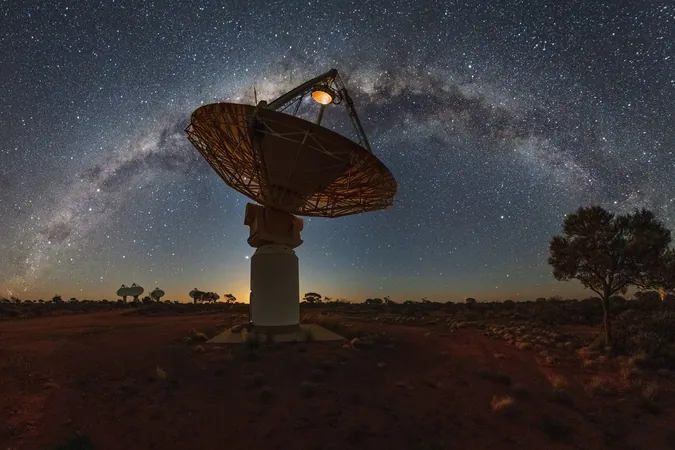
Astronomers Discover Mysterious Radio Signal from ‘Zombie’ Satellite!
2025-06-28
Author: John Tan
Unexpected Signals from the Past
In a thrilling turn of events, astronomers in Australia have turned their attention to an astonishing radio signal emanating from a surprising source: the long-defunct communications satellite Relay 2, which has been inactive since 1965!
A New Discovery in the Radio Sky
The Australian Square Kilometer Array Pathfinder (ASKAP) has been on a quest to detect sudden, unexplained radio flashes from deep space, traditionally from distant supernovae or exotic objects like rotating white dwarfs. But this time, they stumbled upon something totally unexpected—a signal that initially appeared to be a powerful Fast Radio Burst, usually originating from galaxies billions of light-years away.
However, upon closer analysis, scientists discovered this burst was coming from right here, just outside our planet's ionosphere. It lasted a mere 30 billionths of a second and resembled the characteristics of a Fast Radio Burst, but the absence of delay between high- and low-frequency waves indicated it was much closer!
The Mystery of the Perytons
Radio astronomers are no strangers to strange signals. In the past, puzzling signals known as perytons confused astronomers until it was revealed they were simply caused by microwave ovens in the observatory break room! Now, with Relay 2 signaling from beyond, the ASKAP team was determined to solve this fresh riddle.
Unveiling the Source of the Signal
The team systematically compared the signal's origin with satellite maps and discovered that the only match was Relay 2. This NASA satellite, once tasked with telecommunications, had been lost to time for over 50 years. Speculations arose, but the team ruled out any secret usage by NASA, stating that Relay 2 could not produce such a distinct burst.
Electrostatic Discharge or Micrometeoroid Impact?
So, what could explain this strange signal? The scientists proposed two exciting theories. The first suggests that solar winds might be hitting Relay 2, building up charge much like how waves deposit salt on a shore. When this electric charge becomes too great, it could cause a discharge, resulting in brief bursts of radio waves—an effect akin to lightning in space.
The second theory points to micrometeoroids colliding with the satellite. Such impacts could create a cloud of dust and plasma, facilitating the same kind of electrostatic discharges. The mystery deepens—if the bursts occur at regular intervals, they likely stem from electrostatic discharge; but if not, micrometeoroids may be the wild card!
A New Frontier for Space Research
This intriguing discovery opens new avenues for exploration. Observing these short bursts from satellites could serve as an innovative way to investigate the electric environment just outside the ionosphere. As researchers keep their eyes on the skies, the quest for understanding our universe continues, revealing even the whispers of forgotten technology amidst the cosmic noise!



 Brasil (PT)
Brasil (PT)
 Canada (EN)
Canada (EN)
 Chile (ES)
Chile (ES)
 Česko (CS)
Česko (CS)
 대한민국 (KO)
대한민국 (KO)
 España (ES)
España (ES)
 France (FR)
France (FR)
 Hong Kong (EN)
Hong Kong (EN)
 Italia (IT)
Italia (IT)
 日本 (JA)
日本 (JA)
 Magyarország (HU)
Magyarország (HU)
 Norge (NO)
Norge (NO)
 Polska (PL)
Polska (PL)
 Schweiz (DE)
Schweiz (DE)
 Singapore (EN)
Singapore (EN)
 Sverige (SV)
Sverige (SV)
 Suomi (FI)
Suomi (FI)
 Türkiye (TR)
Türkiye (TR)
 الإمارات العربية المتحدة (AR)
الإمارات العربية المتحدة (AR)